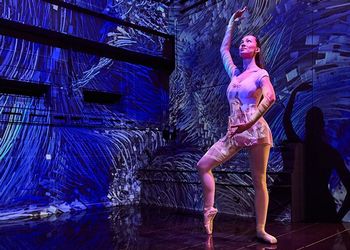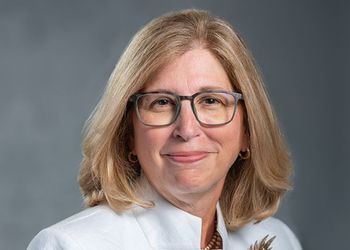Feature: Neighborhood Engagement Centers: A New Model For Student Success

MSU pioneers a new living concept that can help students enjoy more success in all phases of college life right away. Early results look promising.
How can MSU students make the most of their college experience and take full advantage of all the resources and opportunities available on campus?
Many obstacles can impede one’s journey through college, ranging from not having the right study habits to uncertainty about choosing career paths to adjusting to lifestyle changes in independent living. These problems can result in emotional distress and classroom underperformance, among other outcomes.
Three years ago, to enhance student engagement and success, MSU came up with a bold new idea to help with the transition to college. Why not centralize resources that support all aspects of student life right in the residence halls where most live? Thus was born the “Neighborhood Engagement Centers.”
MSU has essentially divided the campus into five neighborhoods— Brody, East, North, River Trail and South.
An Engagement Center in each neighborhood supports students academically, physically and emotionally with a broad array of services from physical fitness and health to social and academic needs. “Many academic, student affairs and residential life units have partnered to achieve the goal,” says Vennie Gore, vice president for MSU Auxiliary Services. “An unprecedented amount of resources will be centralized and instantly accessible. Finally, over time we will be able to track data to help us fine tune which resources and services are the most effective.”
The notion of student engagement is not new. But the use of Neighborhood Engagement Centers as the vehicle for that engagement has broken new ground, especially with the immediate availability of resources for all aspects of student life. The initiative is still young but the early impressions, as well as the potential for new discoveries, says Gore, suggest that Engagement Centers are well on their way to becoming a leading model for student engagement.
A Pioneering Alignment of Resources
While the idea of placing resources right where students live may seem like a simple idea, the development of the initiative required a complex combination of forward thinking by MSU’s leadership, a collection of funding and resources and a commitment to making these centers a reality.
“The conditions were really perfect,” says Kristen Renn, associate dean of Undergraduate Studies and director for Student Success Initiatives. “The vision, the commitment to and availability of funding and the laser-like focus of the leadership, it’s very rare for those three stars to align.”
One aspect of the Engagement Centers that helped to drive support was the wide range of university partners that would have the opportunity to collaborate and positively impact students. The goal of the Engagement Centers was to support every aspect of student life, which includes a student’s living situation, academic performance and overall health. This drew interest from academic faculty members, representatives from MSU’s Residence Education and Housing Services, health practitioners and more.
“All of the parties had a similar desire for students to succeed but their ideas of student success were different,” says June Pierce Youatt, acting provost. “They were specific to the areas in which they worked. Once these partners realized that we viewed student success as something well rounded and touching on a wide range of areas, they saw the role they could play. They stopped talking about their goals and started supporting our collective vision for student success.”
The efficiencies resulting from Neighborhood Engagement Center partnerships also served as a factor for motivating support.
In a large university like MSU, it is crucial that student resources are distributed in a cost-effective manner to ensure that students are getting the most value from their investment. By placing these resources in centralized locations in each of the Neighborhoods, steps away from where students, eat, sleep or attend class, the chance that students take advantage of them is increased greatly.
“The Engagement Centers have enhanced student life by enabling students to get help quickly by coming to a one-stop-shop to receive any help they need,” says Julia Garvey, a senior studying communications and Brody Engagement Center student peer assistant.
Making the Scholarly Culture Visible
Engagement Centers are currently up and running in all five of MSU’s Neighborhoods—Brody, East, North, River Trail and South. Brody includes Armstrong, Bailey, Bryan, Butterfield, Emmons and Rather Halls; East includes Hubbard, Holmes, and Akers Halls; North includes Abbot, Mason, Phillips, Snyder, Campbell, Gilchrist, Landon, Mayo, Williams & Yakeley Halls; River Trail includes Van Hoosen Apartments, and McDonel, Owen and Shaw Halls; and South includes Holden, Wonders, Case and Wilson Halls.
A number of innovative student engagement initiatives are starting to take effect. Some of the best examples of this are the new opportunities for professors to connect with students. Oftentimes, busy student schedules or large class sizes can make it difficult for a student to receive the individual attention or assistance they are looking for. However, thanks to the academic support structures available in Neighborhood Engagement Centers, professors can pass along information directly to Engagement Center tutors. This allows them to identify issues they see their students dealing with and how students can overcome these issues. Residential staff can also take part in visiting students in their rooms or in study spaces to inform them about opportunities for tutoring or other academic assistance, underscoring the academic culture and increasing a student’s chances for success.
“Some classes can be especially difficult for first-year students,” says Kelly High McCord, director of the Brody Neighborhood Engagement Center. “To help ease the transition to college, academic departments arrange to have teaching assistants come into the Engagement Center to support students in courses they may find challenging.”
The Engagement Centers also feature a range of study areas throughout the building for everything from a single-person desk or table to an enclosed group study area. These areas, located immediately off main hallways in residence halls, are available for general study, tutoring sessions, larger writing clinics and a number of other uses.
“When a student goes to dinner or returns from class, he or she sees undergraduate research posters on walls or other students studying in Engagement Center study spaces,” says Reggie Noto, director of the Engagement Center in East Neighborhood, located in Hubbard Hall. “While each center is unique, the open design of the study spaces is a unifying element that makes the academic culture visible and works to remove the stigma that Might be associated with seeking out academic help or tutoring.”
The health practitioners enjoy a similar set up. With a health clinic in every Neighborhood, MSU’s Student Health Services can now provide more convenient access to care and treatment. Furthermore, MSU’s Olin Health Center has a direct outlet for relaying helpful information and preventive measures about any health-related trends or seasonal issues they see arising, helping to keep campus hale and hearty. Engagement Centers also host various fitness classes to support the physical well-being of students.
“Fitness classes allow students to participate in free, instructor led group exercises right in their neighborhood,” says Mackenzie Taylor, a Brody Engagement Center peer advisor and senior studying kinesiology and premedicine. “As a freshman or at any class level, this is a great opportunity because not only do you get to meet people who live in your neighborhood, but you also get to work out for free.”
Neighborhood Engagement Centers have also proven to be a helpful home for MSU’s Career Services. Career advisors are available For consultations throughout the day to provide convenient and immediate assistance or advice, helping students to start thinking about and preparing for their futures early in their college careers.
Finally, Engagement Centers work to strengthen the sense of community established within the Neighborhood model. The Centers serve as central meeting places and have the space to host social events. While every Engagement Center is unique, many host various student groups on a weekly basis, feature community kitchens which are capable of hosting cooking events or classes and offer basic lounge spaces for meetings or relaxing with friends. The Engagement Center resources Are meant to touch on every aspect of student life and will only grow as the Engagement Centers become more established.
“People who come to take tours of the Engagement Centers during the day get a good idea of what they have to offer, but the best representations are available in the evening,” says Kelly High McCord. “Walk through the halls in the evening and you’ll see 30 students in a Zumba fitness class or 90 students in a tutoring session, giving you a great sense of community fostered by the Neighborhood Engagement Centers.”
“A scholarly environment takes hold because students see their friends and peers taking Advantage of Engagement Center services and they realize these resources aren’t just for those who are struggling; they are for those who want to excel.”
Future Opportunities for Discovery and Innovation
While most of the Engagement Center’s focus is on immediately impacting student outcomes, there are also a number of long-term implications for the work being done in MSU’s Neighborhoods. The pioneering nature of the Engagement Centers means there is the potential for experimentation and exploration to determine what methods of student engagement prove to be most effective.
One example of this will be the Engagement Centers’ impact on four-year graduation rates. This overall metric, as well as differences in achievement rates among members of different demographic groups, has been identified by MSU as in need of improvement. By tracking how students who use Engagement Center services fare versus those who do not, the efficacy of certain services and programs can be assessed.
“Neighborhoods can become a place to collect and evaluate data to analyze and improve programs and services to students,” says Kris Renn. “During the academic year, we can use Engagement Centers to build and assess on the go.”
During the first half of fall semester, as the final two Engagement Centers were brought online, the three active centers hosted more than 15,000 students for various services. Now that all five Neighborhoods feature Engagement Centers, those numbers look to grow, which brings further opportunities to assess these student engagement methods.
Finally, as the list of Engagement Center services and partners grows, so too will the role the centers play in the lives of students. The Engagement Center concept is still in its infancy but the resources, classes and other services available are already becoming common place in students’ day-to-day lives.
“I brought a friend of mine, an MSU alum and former Hubbard Hall resident, through the Hubbard Hall Engagement Center recently,” says Reggie Noto. “It has come so far and he was amazed that this was the same place he had lived during his time at MSU.
“However, for current students, these Engagement Centers and the resources they provide are a Basic part of everyday life and taking advantage of them has become the norm.”
Promising Early Results
The Engagement Center initiative is still young in its development, but already the results are promising. More and more students are learning about and seeking out Engagement Center resources and the list of campus partnerships continues to grow. As these centers continue to expand And develop, their methods will be refined through evaluation and assessment, improving services for future Spartans. There is still a good deal of work to be done, as the Engagement Centers and the Neighborhood model join the countless other initiatives being conducted across campus with the goal of enhancing student success. Nevertheless, the promise and potential of the Engagement Centers have many excited as Michigan State University strives to build our high performance culture.
Eric Anderson, MA ’13, is a communications manager for the Creative Services Dept., MSU Residential and Hospitality Services. He graduated from Hope College and recently received his master’s degree from MSU.



